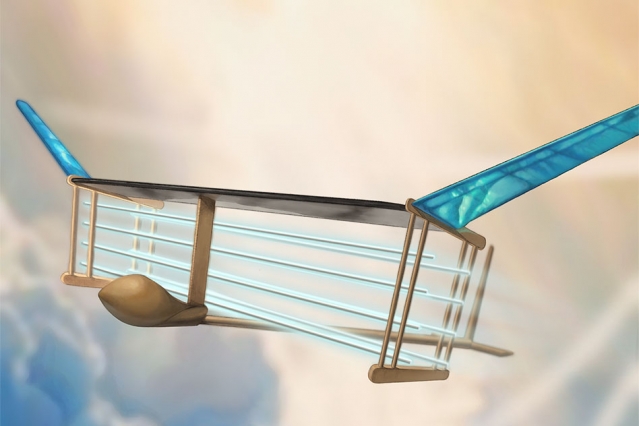Have you flown in a plane? Are you a happy flyer? A fascinated flyer in awe of technology? An oh-this-is-suuuuuper-relaxing flyer?
Or are you an ARE-THE-WINGS-STILL-ATTACHED-WHAT-WAS-THAT-DID-THE-ENGINES-JUST-STOP?!? flyer?
If that last one describes you, then you might not want to hitch a ride on the world's newest experimental plane. It has no propellers and no jets. Instead, it flies by electrifying the air.
Yeah, you read that correctly. It electrifies the air.
Okay, wait. What?
Fluorescent bulbs work by ionizing—or exciting—mercury vapour inside a glass tube, causing it to glow. (Getty Embed)
We understand that this sounds confusing—and you're not alone with that feeling! But we'll try our best to figure it out together.
The plane in question was built by scientists at the Massachusetts Institute of Technology (MIT). It uses something called solid state propulsion, or electroaerodynamic propulsion. What in the world is that? Essentially, it adds a charge to the air around it, which causes an energy flow that propels the plane. To get a better grasp on this technology, we need to look at something known as ionization.
Ionization is when you add a positive or negative charge to an atom or molecule by adding or removing electrons. The hows and whys of this can get very complicated, but ionization is a method of energy production that is used in technology such as fluorescent lamps.
The answer is blowin' in the ionic wind
Magnetism works on the attraction between positive and negative charges. (Getty Embed)
So how does this help a plane fly? Lets go back to the concepts of magnets. Opposites—in this case positive and negative charges—are attracted one another. This attraction is an energy exchange.
On this experimental plane, the leading, or front, edge of the plane's wings ionized the air around it with a positive charge. Meanwhile, the trailing, or rear, edge of the wing has a high-voltage negative charge. Just like our magnets, the positive ions at the leading edge of the wings are drawn quickly to the trailing edge by the negative charge.
As the ions whip toward the negative charge, they then collide with neutral (non-charged) air molecules and push them quickly backward. This is known as an ionic wind, and it is what propels the plane.
Tickets are NOT available
To be sure, it will be a long time before we see this used in a conventional airplane. For one, the experimental plane is barely bigger than a human—definitely not ready for any passengers. And though the technology can create as much thrust as a jet engine, it is not very efficient yet. In other words, it will require a lot of power to get this off the ground for any sort of meaningful flight.
But every idea starts somewhere. Looking at the original Wright Brothers' plane, who would've predicted the massive jet liners that have come since then! In the end, this technology is much quieter than conventional planes, have no moving parts, no exhaust, and is fully electric. It's not hard to see a future where this is the only way that we fly!
Watch this video from Nature for more information on how this amazing aircraft operates!
 Is this the future of flight? (Christine Y. He)
Is this the future of flight? (Christine Y. He)









